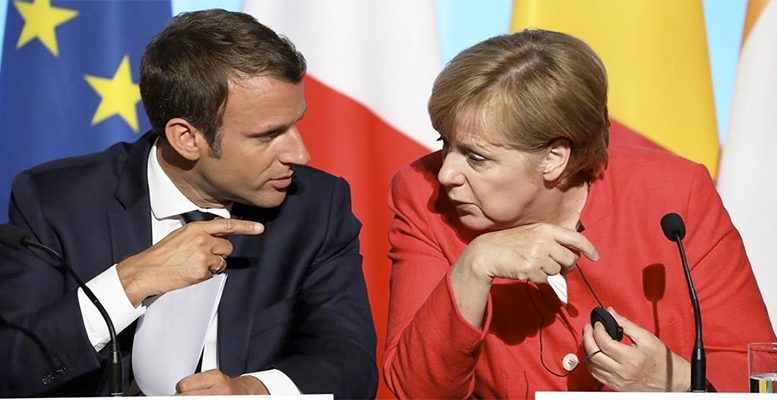Last September, German and French academics proposed ways of reaching a practical understanding in order to restore the Berlin-Paris axis and, along with it, the European Union.
With the definitive exit of the UK from the EU in 2020 and the rise in populism, Europe is on the way to losing its international relevance. So both Germany and France, the strongest economies in the area, are obliged to seek a balance of power to avoid this possibility. Where are their economic indicators? Are they solid enough to revitalise the German-French axis? The analysts of Tradition, Oscar Anaya and Rubén Ruiz try to clear up these doubts via their different analysis filters.
In France, economic indicators have been improving on a monthly basis throughout 2017. According to the experts, “this inertia has not been a last-minute bounce but more something which has been conceived over the last few years and has consolidated this year.”
It’s true that during 2017 there has been a decisive turning point. The presidential elections held last May gave the victory to Emmanuel Macron. The market interpreted this as the perfect catalyst for renewing interest in French equities. The indices which cover all the French stocks have performed very well: returns varying between +10% and + 25%, with those focusing on SMEs doing particularly well.
So could this trend continue during 2018?
Tradition’s starting point is the 1,086 listed French companies. The first filter they apply is coverage. In this sense, they require that a minimum of 10 research houses cover each one of these companies. This first stage sieves out a lot of companies, leaving 89.
Then the next filter is the rating consensus. In other words, a punctuation system depending on the consensus recommendations. They give 5 points to companies which have a Buy rating, 3 to those with a Hold rating and 1 to those with a Sell rating. Anaya and Ruiz explain:
For our strategy, we have our cut-off line at 4 points. Under this criteria, our list of 89 names is reduced to 31. The last filter we apply is that of the upside. This is because one of the key points of the strategy is not just to show that the French market has been one of those which has best reflected the improved macro picture already mentioned. But whether there is still time to get on this winning train. For this reason, we wanted to use the potential for revaluation as our final criteria. We want to be sure these companies have a minimum 15% potential, as well as being attractive from a valuation point of view. Thus we end up with just 8 companies out of an initial 31, which are the ones we now highlight.
Finally, the experts put their strategy through their backtesting system for a period of 3 years with monthly revisions. What they obtain is a good return, specifically +103% vs the +32.58% of the CAC 40 which has been the benchmark used for comparison purposes.
The German economic engine has been running at a cruising speed in 2017, something not seen since 2011. The figures on activity published throughout the year have confirmed this trend, which has given a significant boost to the employment rate and also productivity. All the indicators of activity are also at highs of the last few years, thus confirming that the trend is strong and will continue throughout 2018.
With this economic momentum, the consensus’ estimates point to the Eurozone’s biggest economy growing at rates of over 2% next year, providing that the political scenario doesn’t interrupt this. It’s important to remember that, after the September elections, chancellor Angela Merkel has been unable to form a government after failing to create a four-party coalition. It’s still not known what the final outcome will be, and a new edition of the Grand Coalition is even be considered.
That said, and given the closeness of ideas amongst Germany’s main political strengths, the final result should not be an alarm signal for the market. So under this premise, the Tradition analysts believe the magic strategy for maximising German returns starts with an initial 1,165 companies. Only 122 firms are saved after the first filter. Then after the consensus rating filter, the number is reduced to 30 names.
The next filter, that of the upside, requires a potential revaluation of over +15%. In this case, the list is reduced from 30 to just 9. The last filter is that of adjusted EPS growths throughout the last year. In this case, the list declines to the 5 companies which have performed the best in this respect.
The last stage is the backtesting and Tradition’s result for the German economy is frankly a good one. The return obtained would have been +136.17% vs the +30.49% of the DAX, the index used as a benchmark. Here it’s worth highlighting the take-off which has happened since the end of last year confirming, with this increasingly bigger differential, everything previously mentioned.





